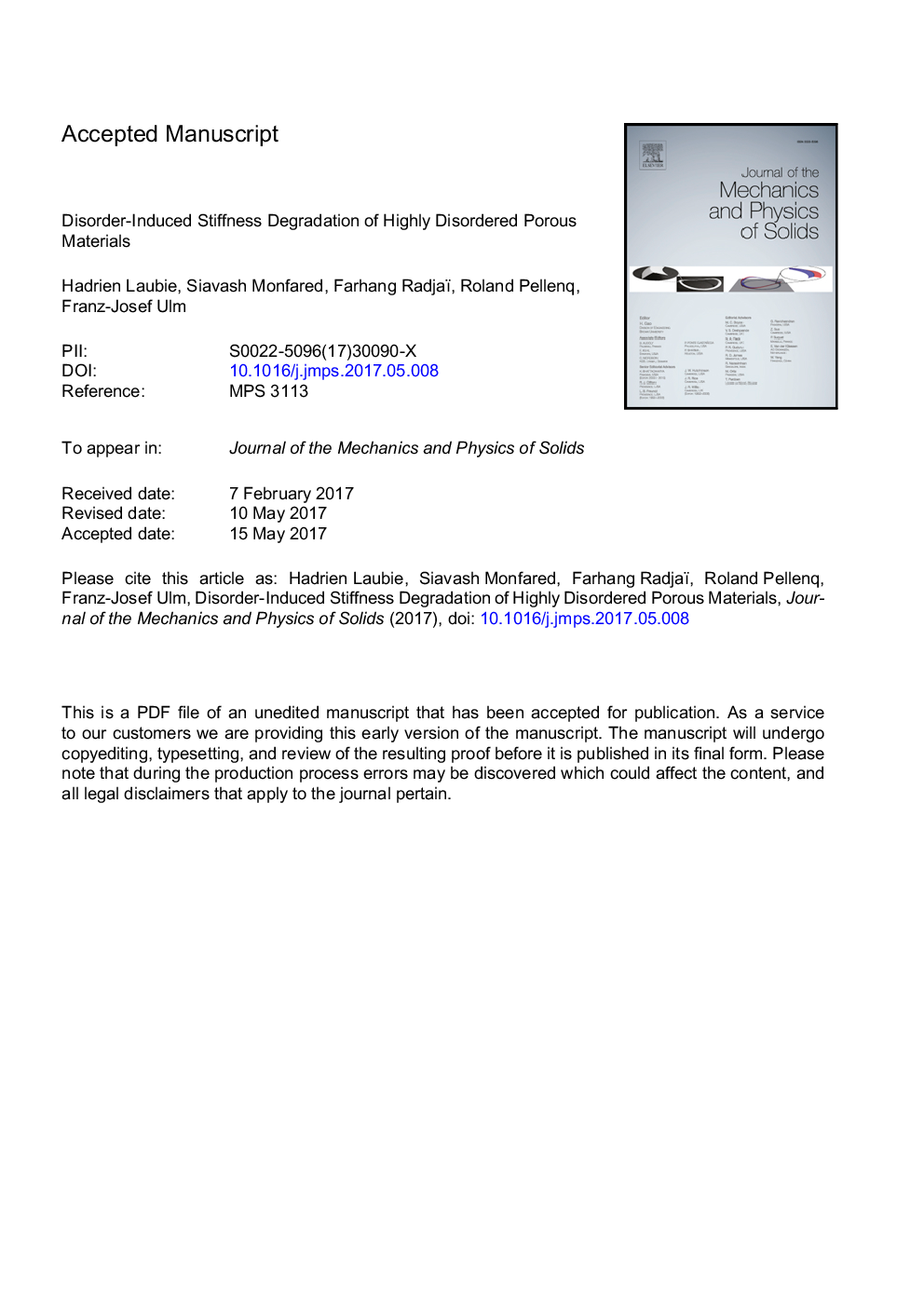| Article ID | Journal | Published Year | Pages | File Type |
|---|---|---|---|---|
| 5018097 | Journal of the Mechanics and Physics of Solids | 2017 | 43 Pages |
Abstract
The effective mechanical behavior of multiphase solid materials is generally modeled by means of homogenization techniques that account for phase volume fractions and elastic moduli without considering the spatial distribution of the different phases. By means of extensive numerical simulations of randomly generated porous materials using the lattice element method, the role of local textural properties on the effective elastic properties of disordered porous materials is investigated and compared with different continuum micromechanics-based models. It is found that the pronounced disorder-induced stiffness degradation originates from stress concentrations around pore clusters in highly disordered porous materials. We identify a single disorder parameter, Ïsa, which combines a measure of the spatial disorder of pores (the clustering index, sa) with the pore volume fraction (the porosity, Ï) to scale the disorder-induced stiffness degradation. Thus, we conclude that the classical continuum micromechanics models with one spherical pore phase, due to their underlying homogeneity assumption fall short of addressing the clustering effect, unless additional texture information is introduced, e.g. in form of the shift of the percolation threshold with disorder, or other functional relations between volume fractions and spatial disorder; as illustrated herein for a differential scheme model representative of a two-phase (solid-pore) composite model material.
Related Topics
Physical Sciences and Engineering
Engineering
Mechanical Engineering
Authors
Hadrien Laubie, Siavash Monfared, Farhang Radjaï, Roland Pellenq, Franz-Josef Ulm,
